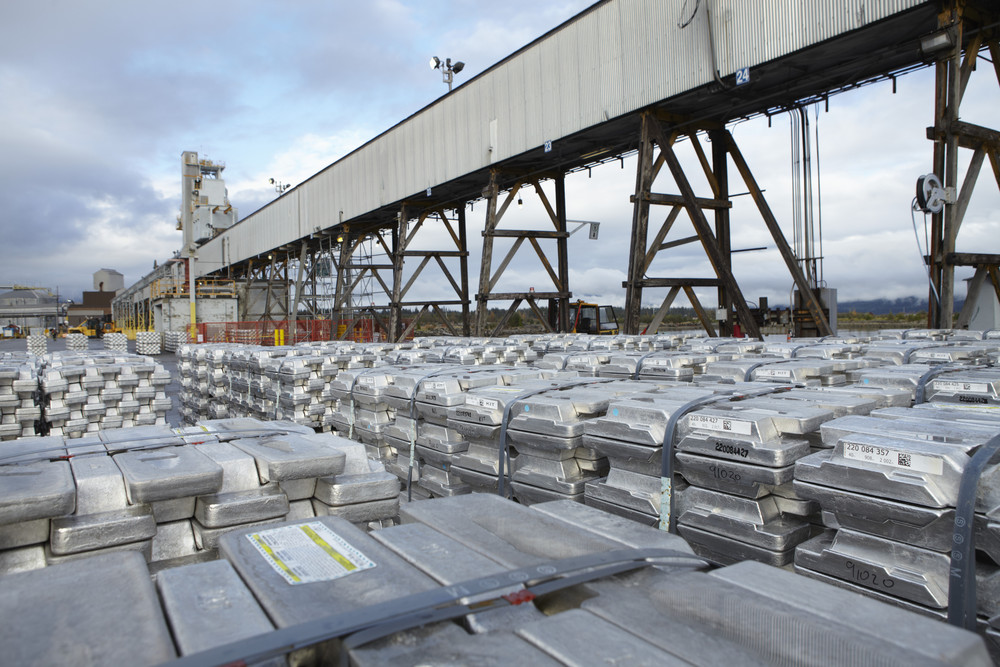
Rio Tinto flags higher costs, cloudy Australian aluminium future

Rio, which could become the world’s top iron ore producer this year, was beset by weather and operational issues in the first quarter which caused it to cut its annual guidance.
On Thursday it also signalled higher costs, as it boosts spending to refit and replace aging plants and old fleets as part of a briefing to investors.
Rio is building out its new Koodaideri mine in Western Australia which it expects to help it achieve a long-held goal of 360 million tonnes of iron ore a year
In a statement, Rio flagged higher sustaining capital expenditure of $1-$1.5 billion each year from 2020, versus earlier guidance of around $1 billion.
It also said it had deferred $500 million of capital expenditure in 2019 to the next year. The global miner said total capital expenditure in 2019 is expected to be around $5.5 billion, and $7 billion in 2020. It put guidance for 2021 and 2022 at $6.5 billion.
“We are approaching a phase where … we have a generation of assets that needs renewing,” head of iron ore Chris Salisbury told an investor briefing.
“I wouldn’t say (the spending increase) is permanent. It’s cyclical. We will continue to update that guidance as we go forward,” he said.
Assets include a concentrator at its Tom Price iron ore mine in Western Australia and replacing some of its existing truck fleet, he said.
The world’s second largest iron ore miner is building out its new Koodaideri mine in Western Australia which it expects to help it achieve a long-held goal of 360 million tonnes of iron ore a year.
That rate was once expected to be reached by the end of this year, but a number of operational bottlenecks and other issues have meant the step change will need to wait until the new mine has ramped up in 2022, Salisbury said.
Rio forecast a rise in iron ore shipments for 2020 of up to 5%, subject to market conditions. Rio has been shipping out increasing volumes of a lower grade, 60 percent SP 10 product.
On its Australian aluminium assets, Rio said the current power situation was not sustainable as prices were too high, the same scenario that led it to review its New Zealand smelter.
“The smelters do lag internationally competitive prices which undermines the viability of the asset,” head of aluminium Alf Barrios said on an earlier media call.
Power accounts for a third of aluminium costs, he said.
In Australia, where Rio has three aluminium smelters, it was talking to power providers and the government, he said. “I’m not going to speculate on the outcome but clearly the current situation is not sustainable.”


Trump weighs using $2 billion in CHIPS Act funding for critical minerals

Codelco cuts 2025 copper forecast after El Teniente mine collapse

Electra converts debt, launches $30M raise to jumpstart stalled cobalt refinery

Barrick’s Reko Diq in line for $410M ADB backing

Abcourt readies Sleeping Giant mill to pour first gold since 2014

Nevada army depot to serve as base for first US strategic minerals stockpile

SQM boosts lithium supply plans as prices flick higher

Viridis unveils 200Mt initial reserve for Brazil rare earth project

Tailings could meet much of US critical mineral demand – study

Kyrgyzstan kicks off underground gold mining at Kumtor

Kyrgyzstan kicks off underground gold mining at Kumtor

KoBold Metals granted lithium exploration rights in Congo

Freeport Indonesia to wrap up Gresik plant repairs by early September

Energy Fuels soars on Vulcan Elements partnership

Northern Dynasty sticks to proposal in battle to lift Pebble mine veto

Giustra-backed mining firm teams up with informal miners in Colombia

Critical Metals signs agreement to supply rare earth to US government-funded facility

China extends rare earth controls to imported material

Galan Lithium proceeds with $13M financing for Argentina project

Kyrgyzstan kicks off underground gold mining at Kumtor

Freeport Indonesia to wrap up Gresik plant repairs by early September

Energy Fuels soars on Vulcan Elements partnership

Northern Dynasty sticks to proposal in battle to lift Pebble mine veto

Giustra-backed mining firm teams up with informal miners in Colombia

Critical Metals signs agreement to supply rare earth to US government-funded facility

China extends rare earth controls to imported material

Galan Lithium proceeds with $13M financing for Argentina project

Silver price touches $39 as market weighs rate cut outlook

















